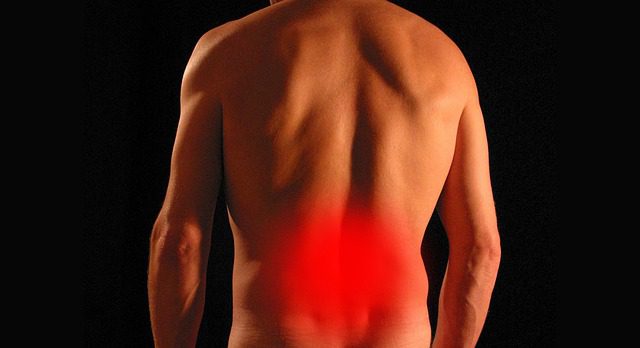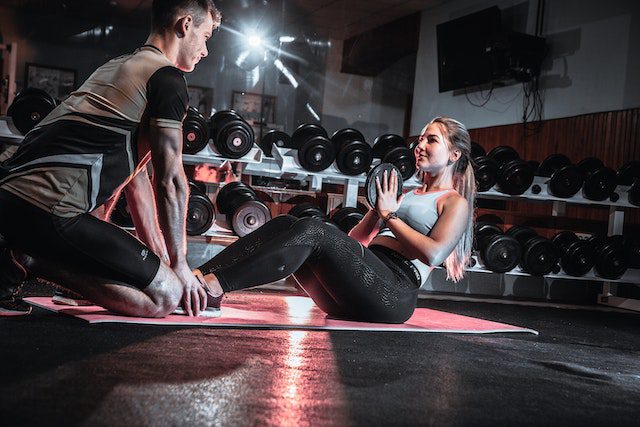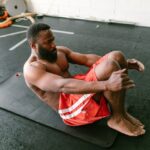

Are Sit-Ups Bad For Your Back?
Sit-ups are a common way for people to strengthen their abs and core. Sit-ups and their effects on your back are, however, a matter of debate.
Are sit-ups bad for your back? Sit-ups can be an excellent way to strengthen your core, but they can also put a lot of stress on your spine and back muscles, which can cause pain and injury.
In this blog, we will talk about how sit-ups might hurt your back and what other exercises you can do to strengthen your core without hurting yourself.
Potential risks of sit-ups for the back

A. Compression of the spine
One of the main concerns with sit-ups is that they can put a lot of pressure on the spine. Your spine is compressed when you lift your upper body toward your knees.
This can cause pain and discomfort. Also, this compression can put extra stress on the discs in your spine, which can increase the risk of herniated discs or other injuries.
B. Straining of the back muscles
Sit-ups can also put a lot of stress on the muscles in the back. As you lift your upper body toward your knees, your back muscles keep your spine stable and straight.
This can lead to muscle strain and tension, hurting and making you feel bad. Also, this strain can put extra stress on your back muscles and tendons, making you more likely to get hurt. Learn more surprising causes of back pain
C. Risk of injury
Sit-ups also make it more likely that your back will get hurt. If you don't do sit-ups right, they can put a lot of stress on your lower back, which can cause an injury.
Also, if you do sit-ups with too much force, they can put a lot of stress on your neck, which can also lead to an injury. Also, if you already have a condition like a herniated disc, sit-ups can make it worse.
Why Are Sit-Ups Dangerous for My Back?
This common exercise can put a lot of pressure on the disks in your spine, especially in the lower back. This can cause back pain or worsen if you already have it. There are a few reasons why sit-ups can make your bad back worse:
- Repeated lumbar flexion. Bend your knees instead of bending over to pick something up. When you bend forward in the lower back, you put a lot of pressure on your spine, which can hurt you.
- Risk of a herniated disc. Sit-ups put pressure on your spine, which can cause a bulging disc, nerve pain, or a painful herniated disc.
- Tilting of the pelvis anteriorly. When you do sit-ups, you tighten your hip flexor muscle. This moves your pelvis forward. This can hurt your lower back.
- Engaging core muscles. Your core muscles work together to keep your body steady. A weak core can cause lower back pain, but you don't have to hurt yourself to build one.
- Improper routine. If you do sit-ups wrong, you are more likely to hurt your lower back.
- Muscle tightness and fatigue. If you don't take a break between exercises, you could get lower back pain or worsen an existing back injury.
If your back hurts, you may have the inclination to try ways to stretch and manage the pain. Sit-ups are one of the most common ways to fix a bad back. Unfortunately, they often cause more harm than good when not done improperly.
How to do sit-ups without hurting your back

Prepare Your Body
Before attempting any exercise, it’s important to warm up your body. A few minutes of light aerobic activity such as jogging or jumping jacks can help prepare your muscles for a more strenuous activity like sit-ups.
You can also do a few sets of low-intensity exercises like arm circles and shoulder rolls to help warm up your core.
Be Mindful of Your Form
Maintaining proper form is the key to doing sit-ups without hurting your back. Start by lying flat on your back with your knees bent and feet flat on the floor.
Place your hands behind your head, but don’t pull on your neck. Instead, focus on contracting your abdominal muscles as you lift your upper body off the ground. Keep your lower back pressed against the floor and avoid arching your back. Lower yourself back to the starting position and repeat.
Place Your Hands Carefully
When doing sit-ups, it's important to place your hands carefully. Placing your hands behind your neck can strain your neck and shoulders unnecessarily.
Instead, place your hands either on your temples or crossed in front of your chest. This will help keep your head and neck in a neutral position, reducing the risk of injury.
Avoid Over-Extension
When doing sit-ups, it's important to avoid over-extending your body. This can put a strain on your lower back and cause pain. Instead, focus on lifting your upper body only as high as it's comfortable. Don't push yourself to do more than you're capable of.
Alternatives to sit-ups for a strong core
Planks
Planks are a better way to build core strength than sit-ups. They work the same groups of muscles as sit-ups, but they don't put any extra pressure on the back.
To do a plank, start in a push-up position with your feet together and your hands directly under your shoulders. Keep your back straight and your abs tight while you hold the position for 30 seconds to a minute.
Dead bugs
Dead bugs are another great way to build core strength besides sit-ups. They work the same groups of muscles as sit-ups, but they don't put any extra pressure on the spine.
Start a dead bug by lying on your back with bent knees and flat feet on the floor. Put your hands behind your head and press the floor with your lower back.
Slowly lower your right arm and left leg towards the floor while keeping your lower back pressed into the floor. Go back to where you started and do the same thing on the other side.
Pelvic tilts
Pelvic tilts are a good way to work out your core without putting pressure on your back. Start by lying on your back with your knees bent and your feet flat on the floor.
Put your hands behind your head and put pressure on the floor with your lower back. Slowly tilt your hips down toward your feet while tightening your abs. Hold it for a few seconds, then let go and do it again.
Conclusion
Sit-ups can be a good way to strengthen your core, but they can also put a lot of pressure on your spine and back muscles, which can cause pain and injury.
Planks, dead bugs, and pelvic tilts are great alternatives to sit-ups that will help you build core strength without putting extra pressure on your spine. To avoid getting hurt, it's important to remember that proper form and technique are key to any exercise.
Before starting a new exercise routine, you should always talk to a doctor or nurse, especially if you already have a health problem. You can get a strong core without hurting your back by adding these alternative exercises to your workout routine.
FAQ
Why are sit-ups not really the problem?

Sit-ups aren't really the problem because they're just one of many exercises that can be done to strengthen the core muscles. Back pain can be caused by weak core muscles, but there are also many other reasons for back pain, like bad posture, muscle imbalances, and injuries.
Sit-ups might not be enough to fully strengthen and condition the core muscles and relieve back pain. Planks, bridges, and squats are some other exercises that can help strengthen these muscles and prevent or relieve back pain.
Are Sit-Ups Bad For Your Spine?
Yes, if you don't do sit-ups right, they can hurt your back. When the spine is put under too much stress and pressure, it can get hurt and cause pain.
It's important to do sit-ups with the right form and to be careful when adding weight or other resistance. If you feel pain or discomfort, stop exercising and talk to a doctor.
Do sit-ups do more harm than good?
No, sit-ups can be a good way to strengthen the muscles in the middle of the body. But if they aren't done right or too much, they can cause back pain and strain. So, when doing sit-ups, it's important to use the right form and not do too many of them.
Are sit-ups good for your lower back?
Sit-ups alone are not ideal for your lower back. Your lower back needs to be strengthened in order to protect it from injury.
To do this, you should perform exercises that involve stabilizing your core muscles, such as planks and bridges. These exercises are more beneficial for your lower back than sit-ups.
Learn the best way to best way to sit with lower back pain.
Why do people still do sit-ups if they are bad for the back?
Sit-ups can be beneficial for the core and abdominal muscles, which help to support the back. The key is to perform sit-ups correctly and with good form, as this will reduce the risk of injury to the spine. Additionally, there are other core-strengthening exercises that can be done to help strengthen the back muscles and improve posture.
If sit-ups are bad for your back, why do schools still have kids do them in PE?
Sit-ups are not always bad for the back. As long as they are done with proper form and technique, sit-ups can be a beneficial part of a total body workout.
Schools may choose to include sit-ups in physical education classes because they are a low-cost exercise, they can be done anywhere, and they work for multiple muscle groups. Schools may also be teaching students proper form and technique to reduce the risk of injury.
About Dr. Sean Ormond



